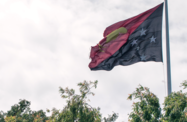Lower returns from the extraction and agriculture sectors and a global fall in commodity prices combined to curb Papua New Guinea’s economic growth in 2016, though prospects for a modest rebound this year are firming up.

Corrections necessary
In early November the government amended its year-end GDP growth projections to 2%, significantly lower than the 4.3% forecast under the 2016 budget, partly due to a weaker performance from the mining sector. Growth in non-mining GDP was also revised downwards to 2.5% from the 3.2% projected at the start of the year.
While growth slowed, inflation edged up to 6.9% in 2016, higher than the budget estimate of 5.7%. Price rises were driven by increased food costs and the depreciation of the kina, which fell 5.1% against the greenback and 9.6% against the Australian dollar through to the end of quarter three, resulting in higher import charges.
To ease budgetary pressures, the authorities floated plans in June to raise $1bn on the international bond market; however, due to a lack of investor interest this did not go ahead. It was hoped that the debt issuance would help bridge the 2016 deficit – forecast at 4.6% of GDP by the Treasury – and inject liquidity into the economy, which suffered from shortages of foreign currency during the year, restricting both trade and imports, with knock-on effects for both manufacturers and retailers.
In its 2017 budget released in November, the government again indicated it could seek to tap the international bond market for funds, though neither the timing nor value was discussed.
El Niño dries up growth
Drought and frost conditions brought on by the El Niño weather pattern had a severe impact on agriculture in the first half of 2016, sharply reducing output and affecting the livelihoods of some 2.2m people, according to data released by the UN Development Programme in early July.
With the government seeking to promote investment in crop production and diversification to better meet market needs, Loi Bakani, governor of the Bank of PNG, announced in September that plans to increase spending on infrastructure and logistics to assist the sector were also in place.
The central bank currently estimates that food imports cost the country some PGK1.2bn ($378m) a year. “Import substitution will improve the livelihoods of the mass population and help relieve PNG of its current foreign exchange pressure,” Bakani told local press.
Mining regains momentum as energy attracts investment
Drought conditions also affected PNG’s mining sector, with low river levels halting the transport of take from some of the country’s mines, causing disruptions to production in the first six months of the year.
The country’s largest mine – the Ok Tedi copper mine located in the Western Province – was one of those affected by the low water levels, which, coupled with weak copper prices, led to the facility being shut down for eight months.
Though commodity prices remained weak throughout 2016, this did not deter the development of new plans for energy projects, with market players looking to take advantage of lower construction costs and focusing on the longer-term benefits of investment.
In mid-April French energy giant Total said it intended to push ahead with the establishment of a major gas extraction, processing and export project in Gulf Province, with a view to break ground in 2017. The plant – dubbed Papua Liquefied Natural Gas (LNG) – has an expected production capacity of 7m tonnes per annum, with investment estimated at around $10bn.
Total’s US competitor ExxonMobil is also raising its profile in the country by expanding output and export capacity at its joint venture PNG LNG facility – an integrated development with an output of 7.4m tonnes of LNG each year. The operator is looking at a proposal to add a third processing train, a project tentatively valued at $9bn, according to global financial services firm UBS.
Discussions are also ongoing about development of a third LNG plant, with Australia-based Horizon Oil and its partners considering building a mid-scale facility in the Western Province, according to media reports in November.
If launched, the project would utilise the take from the Stanley and Elevala-Ketu fields, and be located on or near Daru Island with a processing capacity of up to 2m tonnes per year.
Belt tightening ahead
While new and existing developments should strengthen PNG’s medium-term economic prospects, handing down the 2017 budget at the beginning of November, Patrick Pruaitch, minister for the Treasury, said the coming year would be one of consolidation.
Total revenue in 2017 is projected to dip by around 2% on the previous year to PGK11.09bn ($3.5bn), with expenditure being pared back by 3.5% to PGK12.97bn ($4.1bn) to account for this. This will create a deficit of PGK1.88bn ($592.2m), though the state debt-to-GDP ratio will remain fairly stable at 28.8%.




